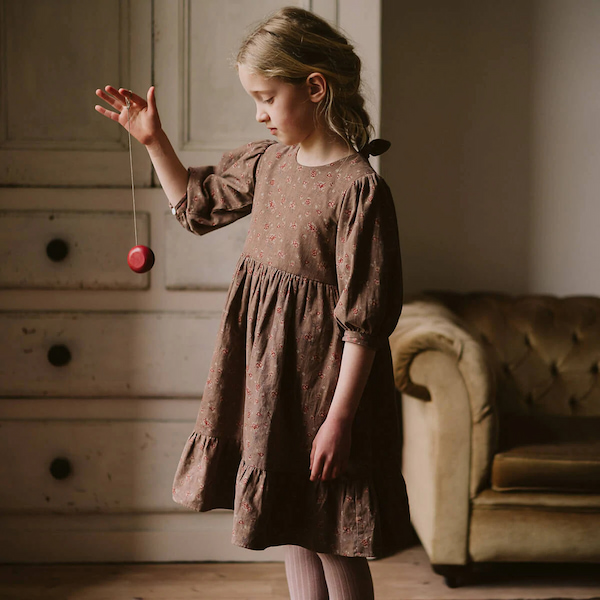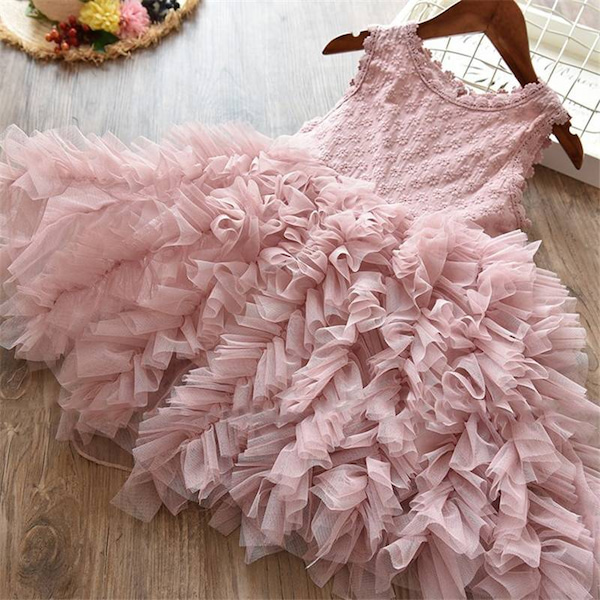Nothing is more valuable in a parent’s life than their child. Their health, well-being and everything else is a number one priority. You wouldn’t want anything but the best for your youngest.
But what about the clothing? Apart from choosing trendy designs, what about the material? You already know that girls clothes can play an essential part in her daily activities and impact her health, but do you know what kind of fabric is best for kids clothes?” Should you only choose clothes made with natural materials, or can you also give synthetic materials a chance?
Why Is Children’s Clothing Material Important?
Compared to your adult skin, your child’s skin is far more sensitive. Even though the skin is slightly more mature by the age of four, it is still thinner than adult skin, whereas, at age twelve, it has the same structure and function as an adult’s. During this sensitive skin period in your child’s life, clothing materials should be soft and soothing on the skin while also allowing it to breathe. This will avoid any allergies or other health issues that may arise due to the chemicals used in the manufacturing of some of the clothing. So, keeping that in mind, the best option is to choose girls clothes made from natural materials, such as bamboo, cotton, linen, silk and wool.

Cotton
This natural material is one of the most common and popular options for children’s clothes. It is made from cotton plants, and it’s fluffy and light.
When your little girl wears it, she will be comfortable since 100% cotton is also soft. Clothes made from this material are breathable and are great at absorbing and retaining any moisture from the body. This is very important since your little girl is full of energy and will be sweating when running and playing with other kids. Apart from these fantastic qualities, it is also a very durable material, which is essential to know as a parent because you will be washing your little girl clothes much more frequently. However, 100% cotton is more prone to wrinkles and can be more difficult to iron. Also, it might shrink if washed in hot water or tumble dried.
Linen
Another natural fibre that comes from the flax plant is linen. It’s a cool and breathable material that’s a perfect choice for hot summer days. Also, it is a very durable material, even more than cotton. Clothing for girls made of linen, whether it’s a dress or a T-shirt, can endure a long time if properly cared for, and one of the best things is that it won’t lose its shape after washing. It does, however, wrinkle easier, and while it may feel crisp at first, it grows softer with time.
Silk
This natural material is produced by insects, such as silkworms, honey bees, and beetles, for their nests and cocoons. However, since it has limited accessibility and costs a lot to produce, it tends to be very expensive. Nonetheless, girl clothes, such as sleepwear and others made from this material, are soft and shiny. This luxurious lightweight material is very breathable and cosy. Silk will make your princess feel lovely without irritating her skin, which is especially important if she suffers from skin conditions such as eczema. It is also a great material that can be used all year round. In the summer, it will keep your little girl cool by dispersing any extra heat; However, silk also acts as an insulator between you and the cold, trapping warmth and making you feel warm and comfortable when the temperatures drop.
Wool
This natural fibre is made from the fleece of several animals, including sheep. However, if you think girl clothing made from wool is bulky, you could be far from the truth since wool is lightweight. One of the advantages of wearing wool clothing is that it may absorb up to 30% of moisture while remaining dry to the touch. Wool is also stain-resistant and dirt-resistant, making it ideal for both your little girl and you because you won’t have to wash it as frequently. Also, wool is naturally stretchy, so it will hold its shape and still look great. Your little girl can wear it all year round, and she will stay warm in winter and cool in summer. Furthermore, clothing made from wool will last you for a long time since wool fibres can bend over 20.000 times before they break.
However, some wool may feel itchy; it depends on the size of the micron (the diameter of the wool). If the micron is larger, the wool will be itchier. Another factor for the itchiness may be the harsh chemicals used in its production. Nonetheless, wool is an excellent material for kids’ clothes.
Synthetic Materials
Natural fibres are, without a doubt, a great option. However, thanks to technological advances, many synthetic materials now provide numerous benefits to everyone, including your teen or little girl. Popular synthetic materials include polyester, fleece, lycra, etc.

Polyester
Polyester is a man-made material that derives from petroleum fibres. This synthetic fabric is one of the most well-known and widely used globally. It dries quickly and does not wrinkle as much as cotton or linen. It’s water-resistant and more durable than cotton. Your little girl will look amazing in a formal polyester dress. However, one of the most significant disadvantages is that this material is not breathable, which can be uncomfortable in hot weather.
Lycra
This synthetic material is very elastic. It’s made from polyurethane (flexible plastic material ) and polyester. This material is smooth and wrinkle-resistant. It’s also lightweight, durable and easy to maintain. Your little girl will be able to move around freely when wearing clothes with this type of material. However, due to its synthetic nature, it doesn’t allow the skin to breathe freely.
Fleece
This synthetic material is made from polyester. It’s warm, soft and dries way quicker than other natural fibres. Most importantly, it doesn’t lose its shape when being washed. This makes it great for your little girl’s outwear.
To sum up, natural fabrics are always a better choice. A combination of natural and synthetic materials, on the other hand, produces more durable girl clothes. A cotton and poly blend, for example, will provide your child with the best qualities of both fibres, such as comfort and breathability from cotton and durability from polyester.
